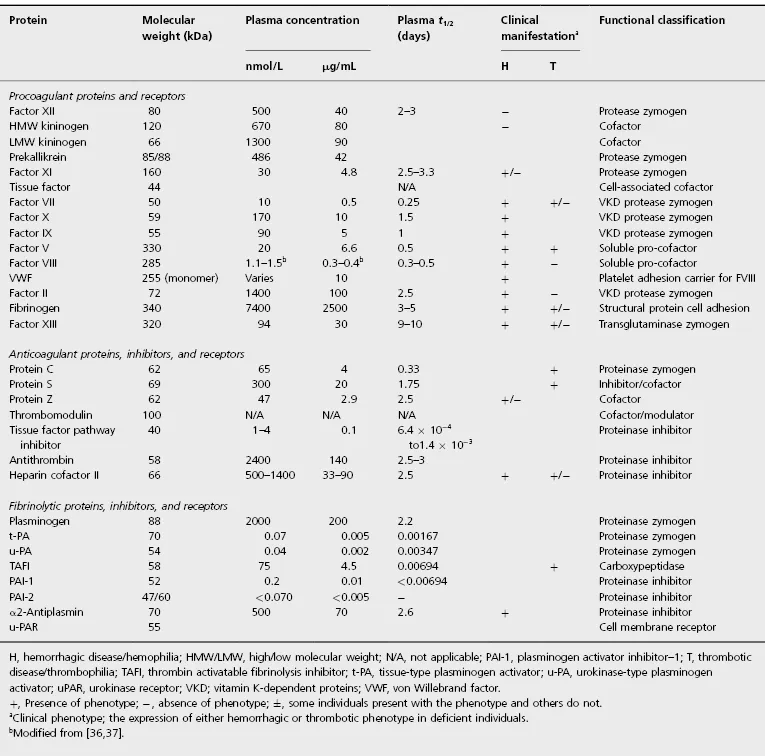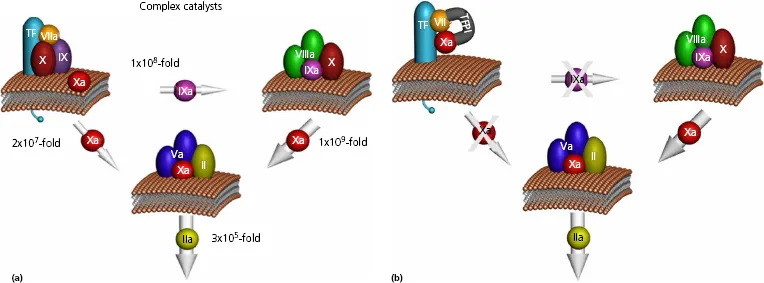
Textbook of Hemophilia
- English
- ePUB (mobile friendly)
- Available on iOS & Android
Textbook of Hemophilia
About this book
Textbook of Hemophilia, 3rd edition
Edited by
Christine A. Lee, MA, MD, DSc, FRCP, FRCPath, FRCOG
Emeritus Professor of Haemophilia, University of London, London, UK
Erik E. Berntorp, MD, PhD
Professor of Coagulation Medicine, Lund University
Malmö Centre for Thrombosis and Haemostasis, Skåne University Hospital, Malmö, Sweden
W. Keith Hoots, MD
Director, Division of Blood Diseases and Resources, National Heart, Lung and Blood Institute
National Institutes of Health, Bethesda, MD;
Professor of Pediatrics and Internal Medicine, University of Texas Medical School at Houston, Houston, TX, USA
Without doubt, Textbook of Hemophilia, 3rd edition is the definitive reference source on all aspects of haemophilia including diagnosis, management and treatment. Edited by three, world-renowned experts on haemophilia, this completely revised resource features chapters written by over 60 international contributors with international expertise in caring for haemophilia patients.
Textbook of Hemophilia, 3rd edition
- Features eight new chapters, covering individualised dosing, vCJD and haemophilia, new drugs in the pipeline, and surgery in inhibitor patients
- Presents new developments, such as gene therapy
- Highlights controversial issues and provides advice for everyday clinical questions
- Represents essential reading for all healthcare professionals involved in the care of those with haemophilia
Titles of related interest
Hemophilia and Hemostasis: A Case-Based Approach to Management, 2nd Edition
http://eu.wiley.com/WileyCDA/Section/id-302479.html, ISBN: 9780470659762
Current and Future Issues in Hemophilia Care
http://eu.wiley.com/WileyCDA/Section/id-302479.html?query=E.+Carlos+Rodriguez-Merchan, ISBN: 9780470670576
http://www.wiley.com/go/hematology
Frequently asked questions
- Essential is ideal for learners and professionals who enjoy exploring a wide range of subjects. Access the Essential Library with 800,000+ trusted titles and best-sellers across business, personal growth, and the humanities. Includes unlimited reading time and Standard Read Aloud voice.
- Complete: Perfect for advanced learners and researchers needing full, unrestricted access. Unlock 1.4M+ books across hundreds of subjects, including academic and specialized titles. The Complete Plan also includes advanced features like Premium Read Aloud and Research Assistant.
Please note we cannot support devices running on iOS 13 and Android 7 or earlier. Learn more about using the app.
Information
PART I
Introduction
CHAPTER 1
Overview of Hemostasis
Introduction

Importance of Complex Assembly to Coagulation


Table of contents
- Cover
- Table of Contents
- Title page
- Copyright page
- Contributors
- Historical Introduction
- PART I: Introduction
- PART II: Hemophilia A
- PART III: Inhibitors to Factor VIII
- PART IV: Acquired Hemophilia
- PART V: Hemophilia B
- PART VI: Pharmacokinetics of Factors VIII and IX
- PART VII: Hemophilia: Birth to Old Age
- PART VIII: Products Used to Treat Hemophilia
- PART IX: Surgical Management
- PART X: Musculoskeletal
- PART XI: Transfusion-Transmitted Disease
- PART XII: Gene Therapy
- PART XIII: Laboratory
- PART XIV: Women and Bleeding Disorders
- PART XV: von Willebrand Disease
- PART XVI: Rare Bleeding Disorders
- PART XVII: Emergency Medicine
- PART XVIII: Evaluation of Hemophilia
- PART XIX: Comprehensive Care and Delivery of Care
- Supplemental Images
- Index
- End User License Agreement